
10 magnificent modern buildings lost to demolition in Toronto
Modernist architecture has never received the respect it deserves in Toronto, an observation that's underscored by the number of important mid-century buildings that have been demolished here. Even as these buildings have been wiped from the landscape, they still exert influence on the way that this city is designed today.
Here are my most missed gems of modern architecture in Toronto.
The Inn on the Park (Demolished 2006-2014)
Architect Peter Dickinson designed the Four Seasons Motor Hotel in 1961, but the took the motel concept to its natural conclusion with the sprawling Inn on the Park, which brought a luxury resort to Eglinton and Leslie. The triangular forms lean on Frank Lloyd Wright for inspiration, but the sweeping porte-cochère is a Dickinson hallmark.

Aeroquay One was a marvel of architecture during the glory years of air travel.
Aeroquay One (Demolished 2004)
Those who around to travel through Aeroquay One recall the observation deck and elegant control tower beside the modernist terminal. Designed by John C. Parkin and opened in 1964, the circular gate design, underground parking, and attention to passenger flow was widely considered groundbreaking.
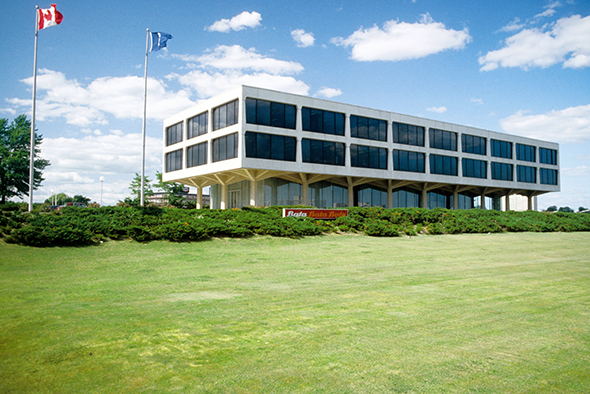
The sadly lost Bata Headquarters. Photo via BataLTD.
Bata Building (Demolished 2007)
Also the work of John C. Parkin, the pavilion-like Bata Shoes Head Office was widely considered a Canadian icon of modernist architecture with its minimalist concrete and glass design. It was demolished to pave the way for the Aga Khan Museum when Bata relocated to Switzerland.
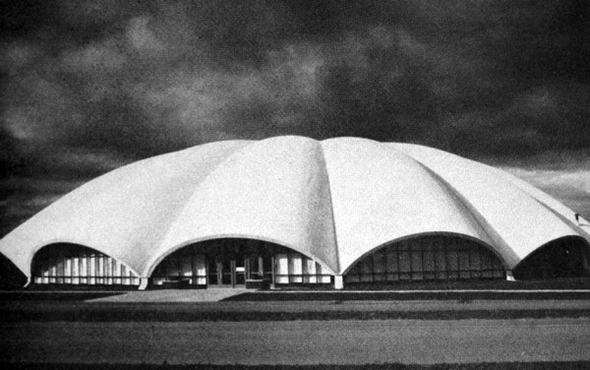
Like an alien space ship landed in Don Mills. Photo via Panda Associates Fonds.
Don Mills Curling Rink (Demolished 1986)
They don't design them like this anymore! Part of the complex that housed Don Mills Mall, this flower-like structure was designed by Douglas M. Hall. The area was a blank slate when it was built in 1960, which allowed for the ambitious architecture, but curling diminished in popularity before it was eventually torn down in the 1980s.
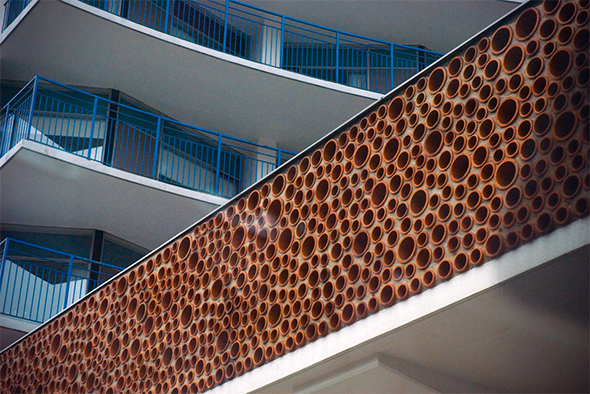
Riverdale Hospital in detail. Photo by Patrick Hirlehey.
Riverdale Hospital (Demolished 2013
This one stings. When Bridgepoint Health expanded with a new complex in 2013, the half-round gem that was the old Riverdale Hospital was demolished. Designed by architects Howard Chapman and Len Hurst, the building was proven to be structurally sound and capable of reuse at the time, but it was sadly deemed expendable.
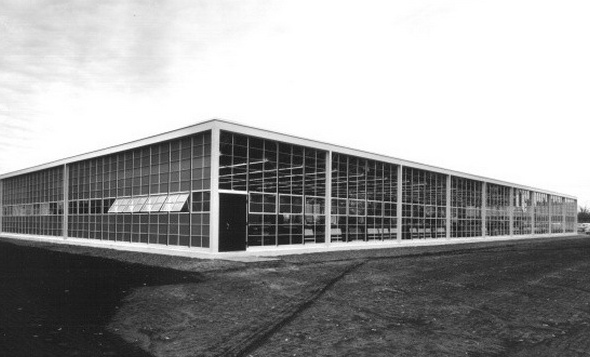
A glass warehouse like no other in Toronto. Photo via the Panda Associates Fonds.
Parkin Offices (Demolished 1980s)
While the offices of John B. Parkin and Associates looked entirely utilitarian, the glass warehouse design was in fact entirely novel in 1958. This was a factory for architecture and importantly open to the world at large. Interior photos show a light-filled, collaborative work space.
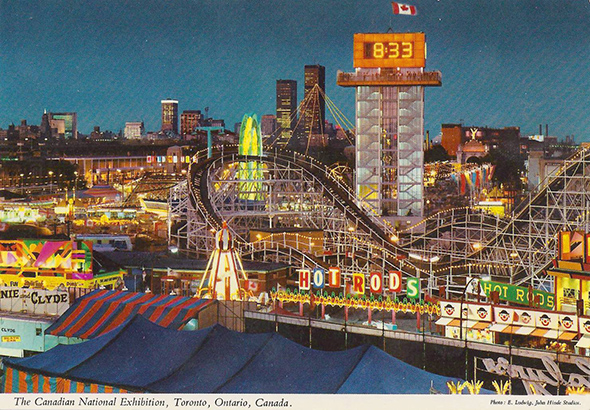
The Shell Tower was once at the heart of the Ex.
Shell Oil Tower (Demolished 1985)
Built in 1955, this welded steel tower was one of a number of modern structures built at the CNE, but probably its most recognizable until its unfortunate removal. Along with acting as the central meeting place at the Ex, the George Robb-designed structure offered a spectacular perch to view the action below.
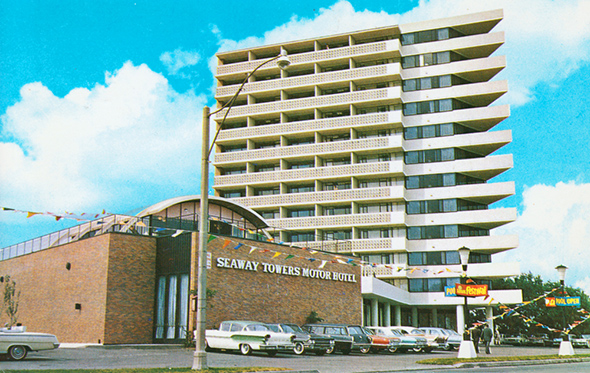
The Seaway Hotel in its former glory. Photo via Robert Moffat's Toronto Modern.
Seaway Hotel (Demolished between 1993-2015)
Unlike the ramshackle motels along Lake Shore to the west of the Humber River, the Seaway Hotel and the Seaway Towers Motor Hotel were more elegant waterfront accommodations, the former of which won a Massey Medal for Architecture in 1955. The original hotel lived its last years as a Four Points Sheraton that's now also gone.
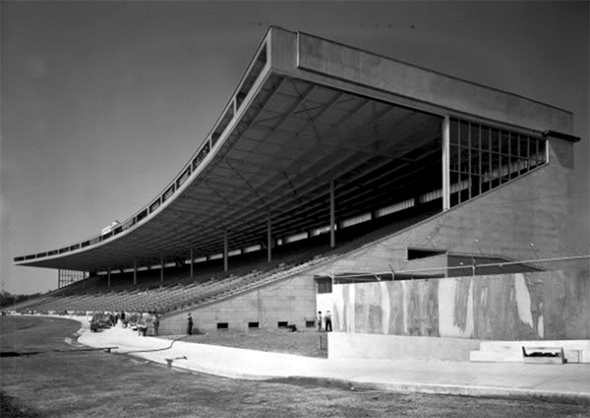
The mighty CNE Grandstand. Photo via Panda Associates Fonds.
CNE Grandstand (Demolished 1999)
There were three grand stands at the CNE over the years, the first two consumed by fire. Perhaps because many remember how terrible it was to watch baseball at Exhibition Stadium, the novelty and design of the 1948 structure is often forgotten. That's a shame. It was a beauty, from its monumental roof to its red brick exterior.
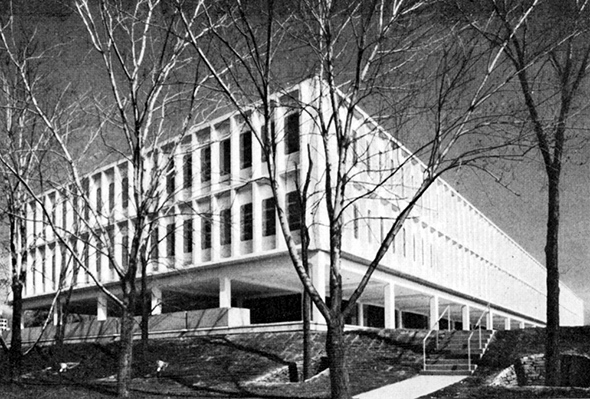
The clean lines of the old Imperial Oil Regional Headquarters in Don Mills.
Imperial Oil Ontario Regional Headquarters (Demolished 1990s)
A recipient of a Massey Medal in 1964, Imperial Oil's Ontario headquarters was unceremoniously demolished for a parking lot in the 1990s when the company vacated the space. It might not astound us today, but its bold pre-cast panels in the International Style showed a new way of thinking about buildings in Toronto.
Latest Videos
Latest Videos
Join the conversation Load comments






